Revealing the True Age Within
Beyond the number of candles on your birthday cake lies a deeper measure of how your body is truly aging: your biological age. Unlike chronological age, biological age reflects the health and functionality of your cells, organs, and tissues—providing insights into disease risk, longevity, and the impacts of lifestyle choices. This article explores what biological age testing is, the science behind it, and how these insights can empower healthier aging.
Biological Age vs. Chronological Age: Understanding the Difference
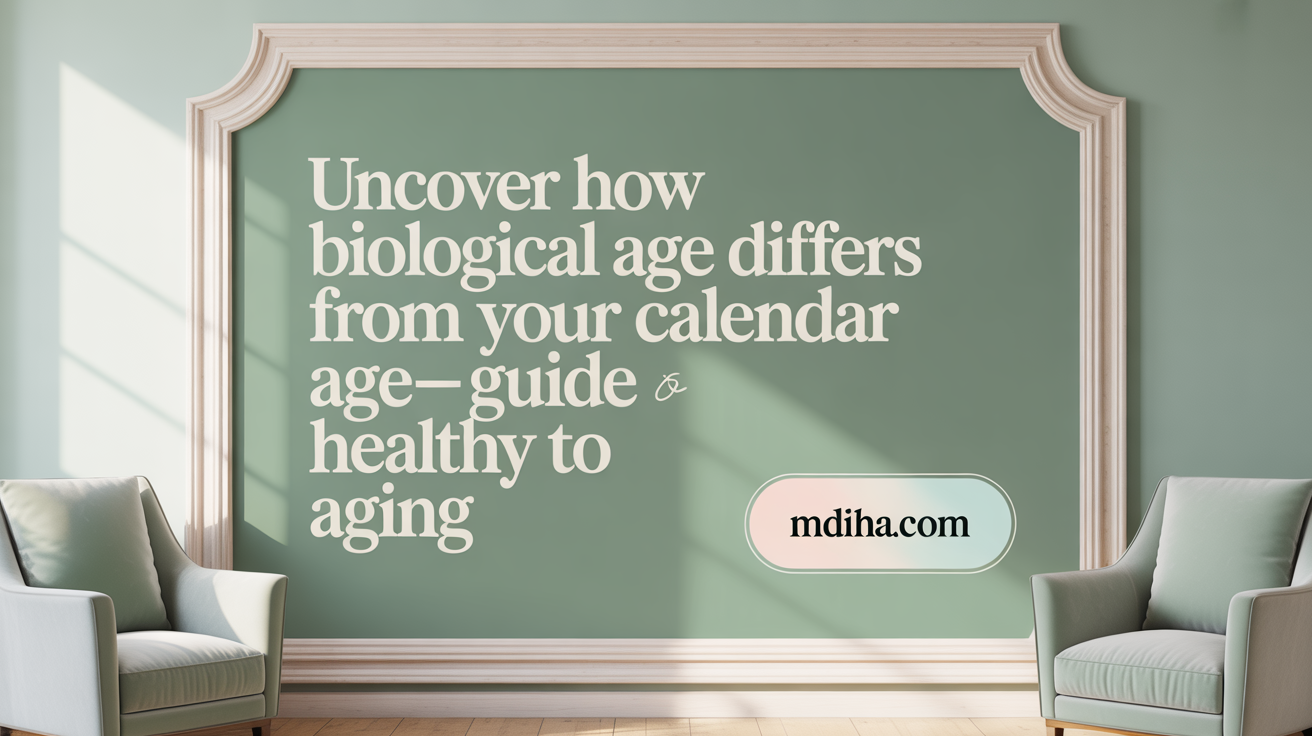
What is biological age and how does it differ from chronological age?
Biological age reflects the condition of your body's cells, tissues, and organs based on how effectively they are functioning. It considers factors such as cellular damage, DNA integrity, and systemic health, effectively serving as a measure of how well your body is aging internally.
In contrast, chronological age simply denotes the number of years since you were born. It’s a fixed measure and does not account for variations in health, genetics, or lifestyle.
While everyone born in the same year shares the same chronological age, their biological ages can be vastly different. Some individuals may be biologically younger or older than their calendar age, influenced by genetics, habits, and environment.
Variability of biological age among individuals
Research shows that biological age varies greatly among individuals of the same chronological age. For instance, two 50-year-olds might have different biological ages due to differences in genetics, diet, exercise, sleep, and exposure to toxins.
This variability impacts overall health, risk of age-related diseases, and lifespan. Someone with a biological age younger than their chronological age may enjoy better health and longevity, while someone with an older biological age may face higher risks of conditions like heart disease, dementia, or diabetes.
Biomarkers used to assess biological age
Several biomarkers are used to measure biological age:
| Biomarker | Method of Measurement | Significance |
|---|---|---|
| DNA Methylation Patterns | Epigenetic clocks analyzing methylation marks | Highly accurate predictor of biological age |
| Telomere Length | Blood tests measuring chromosome end caps | Shorter telomeres are linked to advanced cellular aging |
| Blood Biomarkers | Blood pressure, cholesterol, blood sugar, inflammatory markers | Indicate systemic health and risk factors |
| Physical Capabilities | Tests like balance, strength, and mobility | Reflect physical aging and functional decline |
By combining these measures, health professionals can estimate an individual’s biological age more precisely.
How biological age relates to health risk and longevity
A lower biological age relative to your chronological age generally suggests a healthier status, with reduced risks of age-related diseases such as cancer, cardiovascular disease, and dementia.
Conversely, an older biological age signals accelerated aging at the cellular level, which is associated with higher chances of illness and potentially shorter lifespan.
Advances in measuring biological age not only help in understanding overall health but also enable the monitoring of how lifestyle changes or medical interventions impact the aging process.
While biological age testing is increasingly accessible through blood tests, DNA methylation analysis, and physical assessments, it remains an emerging field. The accuracy is improving, but results should be interpreted carefully, ideally under medical supervision, to guide health strategies for longevity and quality of life.
Key Methods and Biomarkers in Biological Age Testing
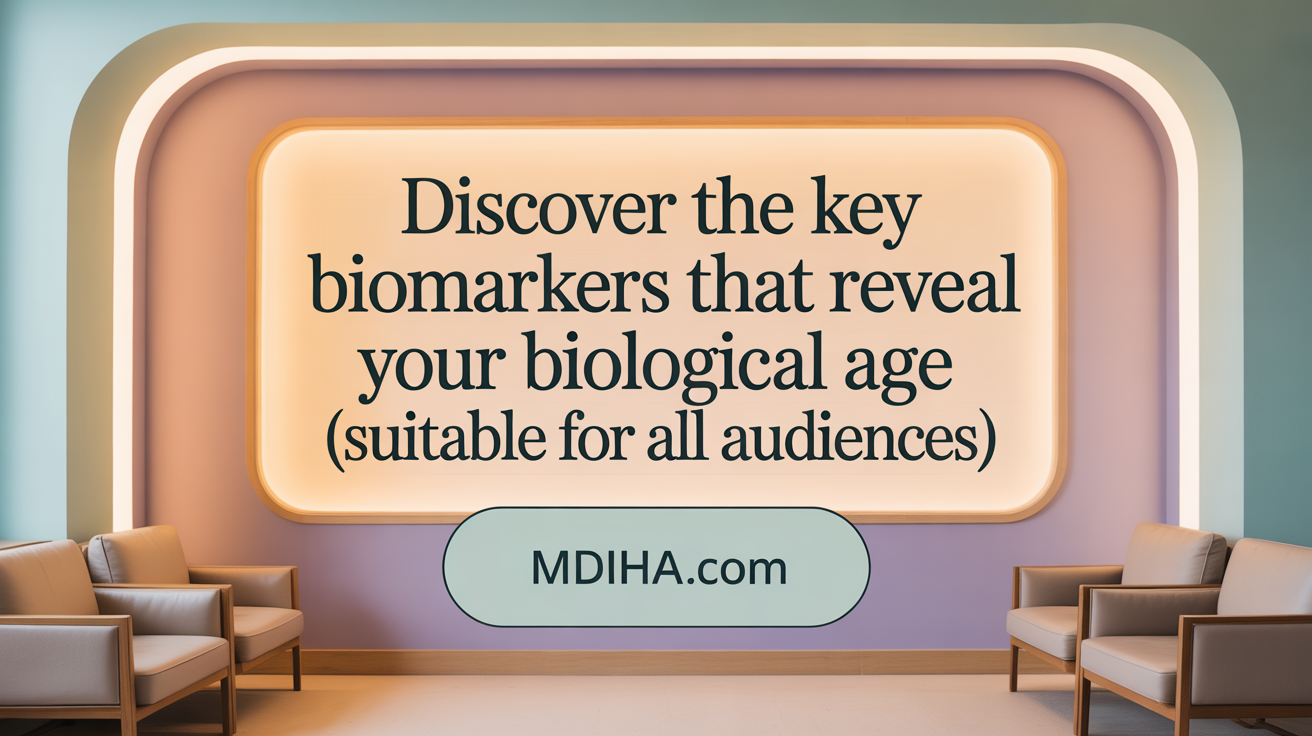
What methods and biomarkers are used to determine biological age?
Understanding biological age involves analyzing molecular and cellular markers that reflect the body's aging process. The most advanced and reliable methods focus on epigenetic clocks, which are based on DNA methylation patterns. These clocks examine specific sites on the DNA where methyl groups are added or removed, influencing gene activity without changing the underlying genetic code. Pioneering models like those developed by Steve Horvath and Hannum analyze methylation at thousands of CpG sites, providing an accurate estimate of biological age. These patterns tend to hyper- or hypomethylate with age, serving as a molecular signature of aging.
Alongside epigenetic clocks, telomere length measurement is a well-established cellular biomarker. Telomeres are protective caps at the ends of chromosomes that progressively shorten with each cell division. Techniques such as quantitative PCR (Q-PCR), flow cytometry fluorescence in situ hybridization (flow FISH), and terminal restriction fragment (TRF) analysis are used to measure telomere length from blood samples. Shorter telomeres are associated with increased age and greater risk for age-related diseases, although they are influenced by lifestyle and environmental factors.
Emerging technological approaches incorporate machine learning algorithms that analyze complex biological data including genetic, epigenetic, and biochemical markers. These models can integrate various clinical measurements and genetic information, such as polygenic risk scores, to generate comprehensive estimates of biological age.
Additionally, blood biomarker panels measuring inflammation, metabolic health, oxidative stress, and hormonal balances are also used to assess systemic aging. Physical assessments like grip strength, walking speed, and VO2 max can further supplement these data by reflecting functional aging.
Collectively, these biomarkers and methods provide a multi-layered picture of biological aging. They are valuable in research settings and hold promise for future clinical applications aimed at personalized aging interventions, early detection of age-related diseases, and healthspan extension.
For those interested in delving deeper, search terms like "biological age biomarkers DNA methylation telomere length blood tests" can guide to current scientific literature and commercial testing options.
The Science Behind Biological Age Assessments
What is the scientific basis of biological age assessments?
Biological age assessments are rooted in understanding the molecular and cellular mechanisms that govern aging. These tests rely on specific biomarkers—measurable indicators that reflect the biological processes associated with aging—such as epigenetic modifications and telomere length.
One of the most advanced methods involves analyzing DNA methylation patterns, known as epigenetic clocks. These clocks use machine learning models to evaluate methyl groups attached to DNA at particular CpG sites. Variations in these patterns correlate strongly with chronological age and are linked to health outcomes, including disease risk and mortality. A prominent example is the epigenetic clock proposed by Steve Horvath, which can estimate the biological age of various tissues and predict lifespan.
Telomeres are protective DNA sequences found at the ends of chromosomes. They shorten with each cell division, acting as a cellular aging marker. Longer telomeres are associated with regenerative capacity, while shorter ones suggest cellular senescence and aging. Blood tests measuring telomere length, typically via quantitative real-time PCR, offer another approach to estimating biological age. However, their reliability has been debated due to measurement variability and external influences like lifestyle and stress.
Despite differences in methods and markers, research has identified partial correlations between telomere length and DNA methylation-based clocks. These associations are more pronounced when clocks are tuned to reflect phenotypic aspects of aging. Together, these biomarkers improve our understanding of aging processes, though they possess limitations—such as variability and environmental influences—that challenge their universal applicability.
As our scientific knowledge expands, combining multiple biomarkers and refining measurement techniques promise more accurate and comprehensive assessments of biological age. Still, ongoing validation and understanding of their predictive power remain essential in translating these tools into routine clinical use.
Reliability, Accuracy, and Current Limitations of Biological Age Testing
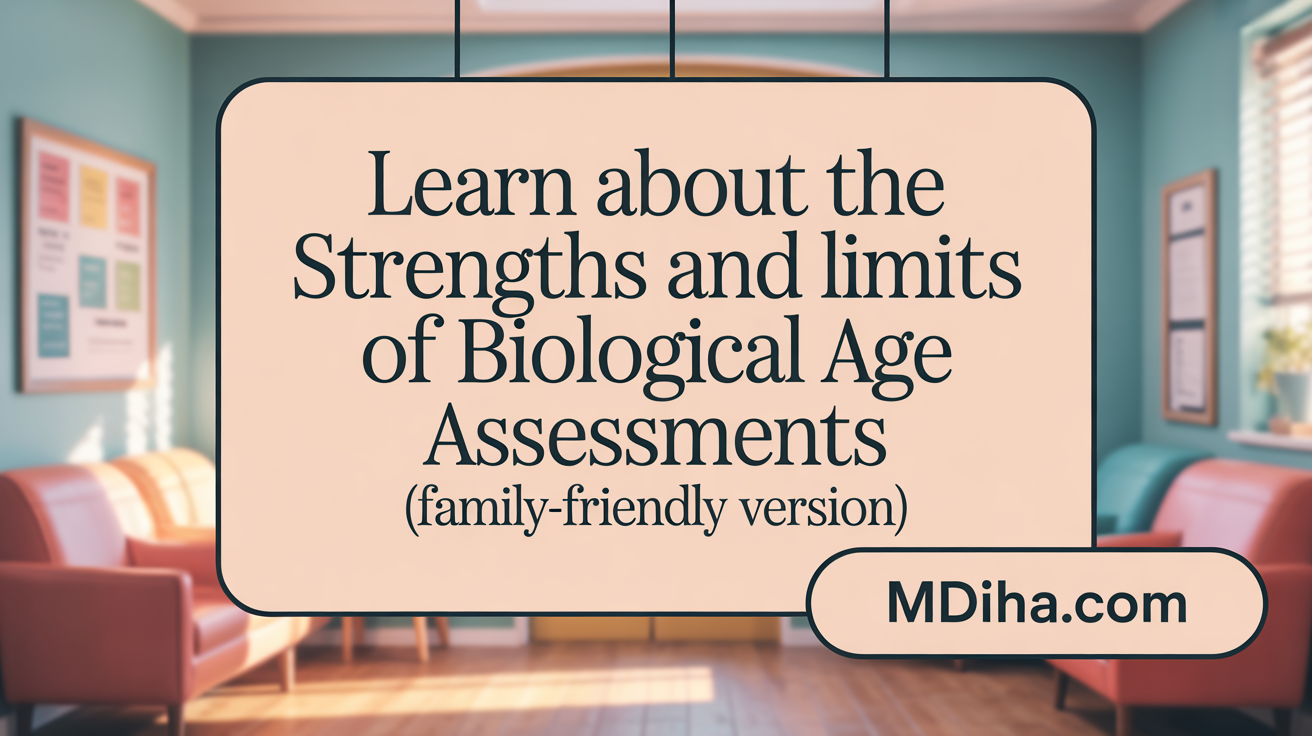 Biological age testing has become a promising tool for assessing an individual’s cellular health and potential lifespan. Advanced procedures, such as epigenetic clocks based on DNA methylation patterns—like Horvath’s clock—are currently regarded as some of the most accurate indicators of biological age. These models analyze methylation at specific sites within the genome, providing a statistical correlation with chronological age that reaches approximately 0.88-0.91, and they can estimate age within about two years for healthy individuals.
Biological age testing has become a promising tool for assessing an individual’s cellular health and potential lifespan. Advanced procedures, such as epigenetic clocks based on DNA methylation patterns—like Horvath’s clock—are currently regarded as some of the most accurate indicators of biological age. These models analyze methylation at specific sites within the genome, providing a statistical correlation with chronological age that reaches approximately 0.88-0.91, and they can estimate age within about two years for healthy individuals.
However, the reliability of these tests is not absolute. Transient factors such as stress, illness, medication use, and environmental influences can cause short-term fluctuations in the results. For example, an acute illness or elevated stress levels might temporarily alter DNA methylation patterns, affecting the biological age estimate.
One of the main challenges lies in the fact that aging is a complex process involving numerous biological pathways. Relying on a single biomarker—such as telomere length—is often insufficient because such markers can be influenced by various external factors and do not fully encapsulate the multifaceted nature of aging. As a result, most current assessments incorporate multiple biomarkers, combining DNA methylation data with clinical measurements like blood pressure, cholesterol, and inflammatory markers, to improve accuracy.
Despite significant advances, validation of these methods in diverse populations and across different health conditions is ongoing. While epigenetic clocks show promise, their predictive power for specific health outcomes, including disease onset and life expectancy, varies and is not yet standardized across laboratories and platforms.
Ethically, the use and interpretation of biological age testing raise questions about privacy, psychological impact, and potential misuse. Moreover, environmental and genetic factors can influence results, making it essential to interpret these tests within a broader health context.
In conclusion, while biological age testing, especially using epigenetic clocks, marks substantial progress in aging research, it remains an evolving field. Continuous validation, careful interpretation, and ethical considerations are crucial before these tests can be widely adopted in clinical practice—aiming eventually to guide personalized health strategies and interventions.
Insights into Health and Disease Risk from Biological Age
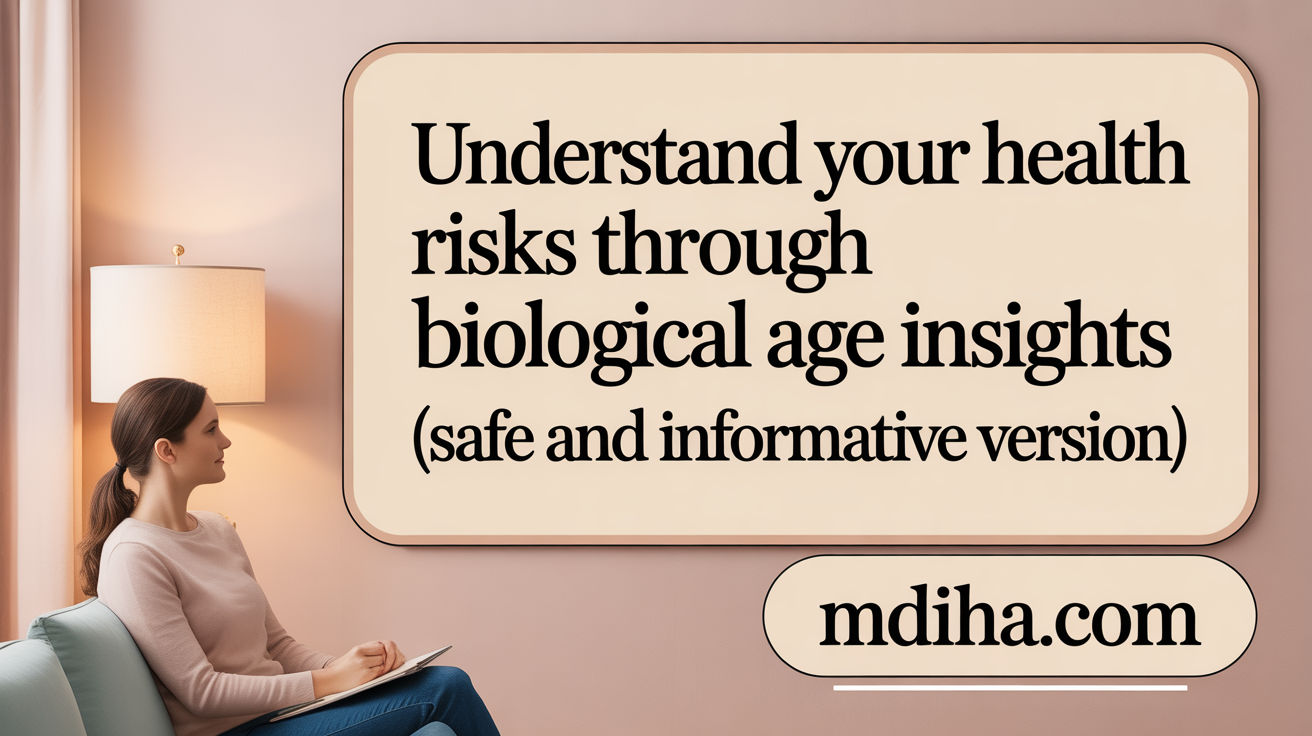
What does biological age reveal about an individual's health and disease risk?
Biological age offers a detailed picture of a person's current health status and potential for future disease development, surpassing what chronological age alone can tell us. This measure, based on cellular and molecular markers like DNA methylation patterns, reflects how fast the body is aging internally.
Research shows that when biological age exceeds chronological age by more than about 3.2 years, it’s linked with higher risks of developing serious illnesses such as heart disease, stroke, dementia, lung disease, and even lung cancer. Conversely, a biological age younger than your actual age indicates better health and a lower risk profile.
Several factors influence biological aging, including lung function, body composition, inflammation levels, and metabolic health. Elevated inflammatory markers like CRP and IL-6 are signs of
Interpreting Biological Age Test Results: Lifestyle and Health Implications
Biological age testing provides a snapshot of how well your body and cells are aging, which can differ from your chronological age. When you receive your results, they can offer meaningful insights into your current health status and potential risks for age-related diseases such as cardiovascular issues, diabetes, or cognitive decline.
Using biological age results to guide lifestyle changes is a practical approach. For example, if your biological age is higher than your chronological age, it may indicate accelerated aging. In response, you might focus on adopting healthier habits like eating a balanced diet—such as the Mediterranean diet rich in fruits, vegetables, and healthy fats—engaging in regular physical activity, ensuring sufficient sleep, and managing stress effectively.
Research shows that lifestyle modifications can influence biological aging markers. Regular exercise, particularly cardio activities, not only improves cardiovascular health but can also lengthen telomeres and positively affect epigenetic patterns. Adequate sleep and stress reduction—through mindfulness or meditation—also play crucial roles in slowing cellular aging.
Monitoring these improvements over time is valuable. Repeating biological age tests every 12 to 24 months allows individuals to track the impact of their health interventions. Decreases in biological age metrics suggest a slowing of the aging process, reinforcing the benefits of sustained healthy habits.
However, it is important to recognize the limitations of using biological age as a sole predictor. Variability in testing methods and external influences like socioeconomic factors or environmental exposures can affect results. Therefore, biological age should be viewed as a part of a comprehensive health assessment rather than a standalone measure.
Incorporating biological age insights into your health planning can empower you to make informed decisions, potentially extending healthspan and improving quality of life. Ultimately, guided lifestyle changes—driven by test outcomes—support not just a longer life but a healthier and more vibrant one.
The Role of Biological Age Testing in Research and Future Healthcare
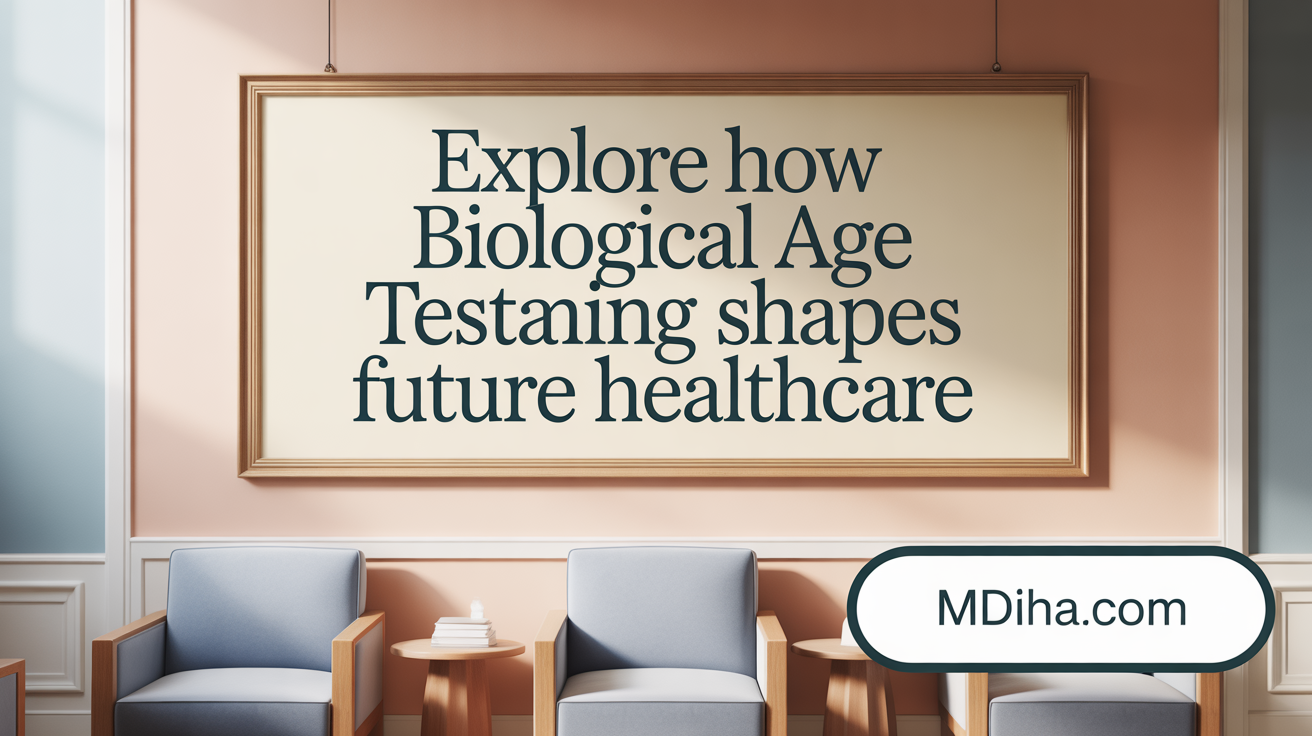
How does biological age testing contribute to understanding aging mechanisms?
Biological age testing is instrumental in uncovering how aging occurs at the cellular and molecular levels. By analyzing biomarkers such as DNA methylation patterns, telomere lengths, and blood-based markers, researchers can observe the biological processes driving aging. These measures reveal how factors like oxidative stress, inflammation, and genetic damage influence cellular deterioration over time.
Understanding these mechanisms helps differentiate between chronological age (the actual age in years) and biological age (the state of cellular health). This insight enables scientists to identify why individuals age at different rates despite having the same calendar age. It also illuminates how lifestyle factors, environment, and genetics impact the aging process. As a result, biological age testing not only facilitates more precise research into aging but also guides development of targeted interventions to slow or reverse certain aging pathways.
How does biological age testing help in predicting health outcomes and mortality risk?
Biological age is a reliable indicator of overall health and the likelihood of age-related diseases. Tests based on DNA methylation clocks, telomere length, and other biomarkers can predict the risk of chronic conditions such as cardiovascular disease, diabetes, and neurodegenerative illnesses.
Studies show that individuals with a biological age higher than their chronological age are more susceptible to health issues and have a higher risk of early mortality. Conversely, a biological age younger than their actual age suggests better cellular health and potentially a longer life expectancy.
These predictions outperform traditional methods like age and basic health metrics alone, providing a nuanced understanding of an individual’s health trajectory. Such insights allow healthcare providers to identify at-risk individuals earlier, enabling targeted preventive measures and personalized treatment plans.
What are the potential applications of biological age testing in personalized medicine and disease prevention?
In personalized medicine, biological age testing is set to become a cornerstone for tailoring health interventions. Knowing an individual’s biological age allows clinicians to customize screening schedules, lifestyle recommendations, and medical treatments based on biological, rather than chronological, age.
For example, someone with an accelerated biological age might benefit from more aggressive lifestyle modifications, supplements, or therapies designed to enhance cellular health. Conversely, individuals with a younger biological age than expected could focus on maintenance strategies.
Biological age testing also plays a significant role in disease prevention by identifying early signs of accelerated aging before symptoms appear. It guides early interventions such as optimized diet, exercise, stress management, and pharmacological approaches that can delay or prevent age-related diseases.
How can biological age assessments be integrated with clinical biomarkers and healthcare strategies?
Integrating biological age metrics with existing clinical biomarkers enhances the predictive accuracy of health assessments. Combining DNA methylation clocks with blood pressure, cholesterol, blood sugar, and inflammatory markers provides a comprehensive view of an individual’s health status.
This holistic approach allows for better risk stratification, early detection of disease, and personalized intervention planning. Regular retesting enables monitoring of the effectiveness of lifestyle or medical interventions over time, ensuring adjustments can be made as needed.
In future healthcare strategies, biological age assessments may become routine, supporting proactive management rather than reactive treatment. They can guide resource allocation, reduce healthcare costs by focusing on prevention, and foster innovations in age-related therapies.
| Aspect | Application | Component | Explanation |
|---|---|---|---|
| Research | Studying aging mechanisms | DNA methylation, telomeres | Reveals biological pathways and potential targets for intervention |
| Predictive Healthcare | Early disease detection & prognosis | Biomarkers, epigenetic clocks | Identifies individuals at higher risk for age-related conditions |
| Personalized Medicine | Tailored interventions | Biological age metrics | Customizes prevention and treatment plans based on cellular health |
| Health Strategies | Monitoring and improving health | Repeated testing | Tracks progress and adjusts lifestyle or medication |
By combining scientific advances with clinical insights, biological age testing is poised to significantly shape the future landscape of healthcare, emphasizing longevity and quality of life.
Practical Considerations: Availability, Cost, and Future Directions
What is the current commercial availability of biological age tests?
Many companies now offer biological age testing, often based on analyzing DNA methylation patterns or telomere length. Popular providers include 23andMe and Tally Health, which provide at-home testing kits that use blood or saliva samples. These tests typically assess epigenetic clocks or telomere length to estimate cellular aging. While available to consumers, their primary focus is on providing insights rather than comprehensive medical diagnostics.
How much do these tests cost, and what options are available?
The price range for biological age assessments varies. Some tests, like those from 23andMe, cost around $100–$200, while more advanced epigenetic clocks can cost up to $750. At-home testing options generally include blood-based and saliva tests, with some companies offering longevity panels that analyze multiple markers. Costs depend on the complexity of the analysis and whether additional features like genetic counseling are included.
Are there newer, less invasive testing methods being developed?
Researchers are exploring simplified, non-invasive approaches such as blood tests that analyze circulating biomarkers and saliva-based epigenetic clocks. Advances in next-generation sequencing and machine learning are helping develop quicker, more accurate, and affordable testing options. Some labs are even investigating wearable devices and AI-powered diagnostics that could offer real-time assessments of biological age, making regular monitoring more practical.
What are exciting future developments in age reversal and regenerative treatments?
Research into epigenetic reprogramming, such as using Yamanaka factors, holds promise for reversing cell aging and repairing damaged tissues. Techniques like cellular reprogramming and regenerative medicine aim to restore youthful cell function. Additionally, the burgeoning field of targeted therapies, gene editing, and stem cell treatments continues to evolve, potentially offering ways to slow or reverse aging processes more effectively in the future. These innovations may significantly impact how biological age is managed and treated.
| Aspect | Current Status | Future Outlook | Additional Notes |
|---|---|---|---|
| Testing Methods | DNA methylation, telomere length, blood biomarkers | Non-invasive, rapid, AI-powered diagnostics | Wearables and real-time monitoring |
| Cost | $100–$750 depending on complexity | Cost reduction with technological advances | Increased accessibility |
| Innovations | Saliva/blood tests, at-home kits | Reprogrammable cells, regenerative medicine | Potential for early intervention and treatment |
Overall, biological age testing is rapidly advancing, making assessments more accessible, affordable, and informative. These developments promise to enhance personalized health strategies and aging interventions in the near future.
Harnessing Biological Age Insights for Healthier Living
Biological age testing unveils the intricate story of how your body ages beyond mere years, providing a powerful window into your health fate and potential longevity. While still emerging as a clinical tool, its ability to reflect cellular health, disease risk, and responsiveness to lifestyle changes equips individuals and clinicians alike with valuable guidance. By embracing evidence-based lifestyle strategies informed by biological age insights, you have the opportunity to influence your aging trajectory positively. As science advances, these tests will become more accurate and accessible, paving the way for personalized interventions that extend healthy years of life. Understanding and monitoring your biological age represents an empowering step toward aging with vitality and purpose.
References
- Biological Age: What It Is and How You Can Measure It
- What Is Your Actual Age? | Northwestern Medicine
- What biological age tests can and can't do - MDLinx
- Testing Your Age - UTMB Health
- How Biological Age Tests Work: Current Methods and Accuracy
- The epigenetics of aging: What the body's hands of time tell us
- What is a Biological Age Test? Understanding Your True Health ...
- Understanding the difference between biological age and ...
